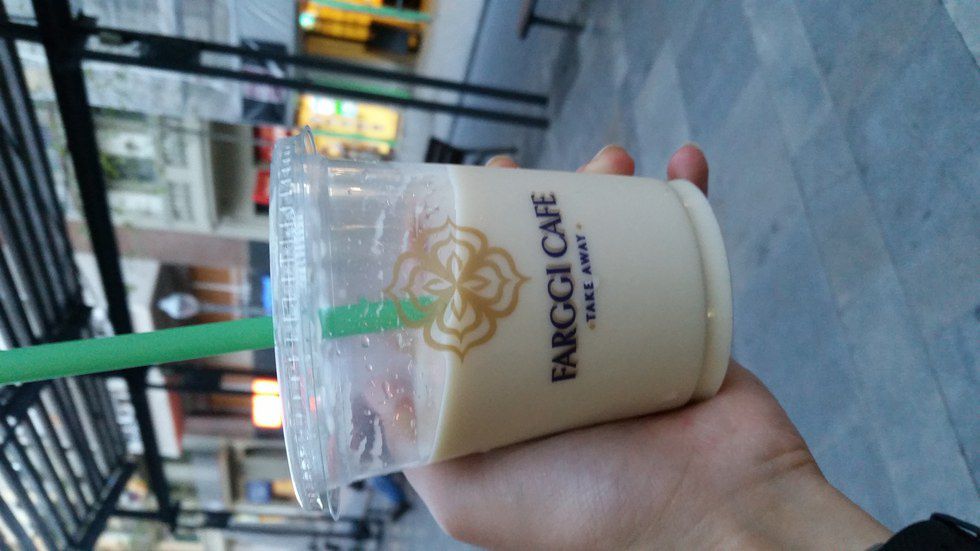Greetings from Barcelona! Actually, I’m not in Barcelona anymore. I’m at my desk, but I have another cool drink to introduce you to: the humble horchata! It's creamy color reminds one of soy milk, so that's what kind of taste I was expecting when I bought it. But it was definitely not what it looks like. Hints of fresh watermelon, coconut and citrus teased my tongue. It was like when you see something in the corner of your eye, but can't see it when you look directly at it. The taste was so familiar, yet distinctly different from any other drink I have tried. It was like a creamy, light fruit smoothie with just enough sugar to bring out the flavor, but it had the smoothness and creaminess of a good glass of milk.
Hochata, where have you been my entire life?
But what is horchata exactly? It's quite confusing to answer. When I asked the shop owner in my limited fragmented español, he only told me it was a "fresh" drink, perfect for the summer and fall. It turns out, horchata isn't only made one way. It is the name of several kinds of traditional beverages and can be made with ground almonds, rice, sesame seeds, rice, barley, tigernuts (chufas), melon seeds, cinnamon, vanilla, sugar and more depending on where you are in the world.
Where does that fruity taste come from then? Maybe the nuts, or the sugar or maybe just plain sorcery. Two glasses of horchata, even in the same country, can taste vastly different as many restaurants have their own recipes, so don't write off horchata forever if you taste one you don't enjoy! Just be understanding. Horchata has an identity crisis, just like some of us homo sapiens, ya know?
The horchata I describe here is from Farggi Cafe, near La Sagrada Familia in Barcelona, for 3 euros, which may seem a bit expensive until you realize that its bigger than a Starbucks tall drink and costs less. It’s the best one I have tasted.






















